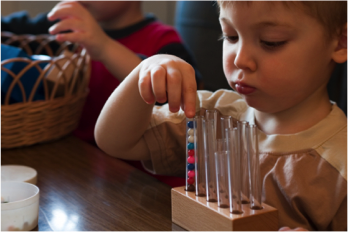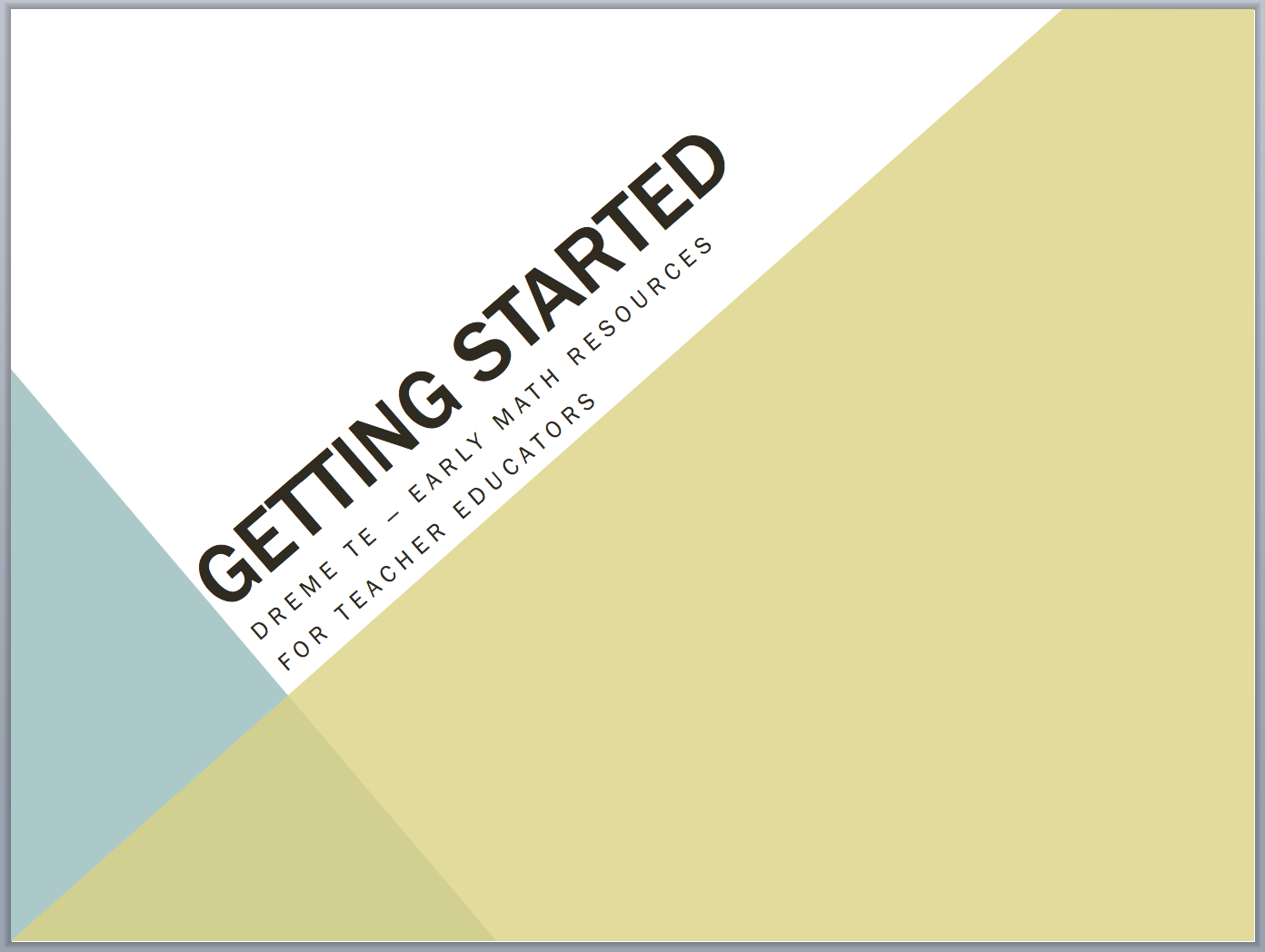Measurement in early childhood involves important mathematical concepts that can be supported in the preschool classroom through children’s everyday problem solving. This handout provides insights into children’s development in this important domain and gives examples of classroom applications.
In the lab, four-month-old Carlos sat on his mother’s lap watching a computer screen that showed three square images in succession, each square twice the size of the previous, followed by a blank screen. This series of screens was repeated until Carlos lost interest (habituated) and began to look around the room. The second half of the experiment included these same three increasing-sized squares in succession, followed by three images of the squares decreasing in size. Carlos noticed this change immediately. He stared much longer at the screen, seemingly registering that this new arrangement was different from the first series.
At two years old, while at the dog park, Carlos informed his grandmother “Big dog!” while pointing at a Great Dane, then said excitedly “Tiny dog!” when the Chihuahua entered the dog run. By three, he definitely knew that asking for another a spoonful of macaroni and cheese resulted in more of his favorite food. By the time he started kindergarten, Carlos could line up his cars in ascending size order. For Carlos, noticing a change from increasing-sized squares to decreasing-sized squares set the stage for dog size comparisons, acquiring more of his favorite food, and setting up a mini NASCAR race.
It seems that, as in the case of numerosity (visit Counting on Counting for more information about numerosity), humans pay attention to aspects of measurement from infancy. Young children apply early concepts of measurement in many of their everyday activities. They compare sizes of toys and portions of food, their height to another’s, the weight of two pumpkins, and the lengths  of toy trains. They use new terms such as longer, shorter, taller, bigger, smaller, wider, heavier, and lighter. They even begin to grapple with time, learning the ever-useful naptime stall, “two more minutes!” In doing so, they illustrate a not-yet-mature concept of minute, but do know that more and minutes put together creates a delay!
of toy trains. They use new terms such as longer, shorter, taller, bigger, smaller, wider, heavier, and lighter. They even begin to grapple with time, learning the ever-useful naptime stall, “two more minutes!” In doing so, they illustrate a not-yet-mature concept of minute, but do know that more and minutes put together creates a delay!
Eventually measurement covers much more. Children compare and order by length, area, capacity, weight, time, and temperature. They use non-standard measurement tools such as hands and fingers to estimate length, blocks or squares for area, and sand and water for capacity.
With both non-standard and standard measurement, children struggle with the importance of unit consistency. If we measure how tall a tower is with a child’s hand, we will come up with one number. If we use an adult’s hand and we’ll come up with another. But the tower hasn’t changed height. Teachers need to negotiate this territory thoughtfully, providing opportunities for children to observe the inconsistencies that occur when the unit of measurement isn’t consistent. Preschool children aren’t always ready to use standard measurement tools such as rulers, scales, and tape measures, but these may serve as examples in the use of consistent units.
Measurement is an application of some of the earliest mathematics that children learn and there are many opportunities in the classroom to support this development in meaningful ways. In play, measurement is already very meaningful, particularly around fairness (“He got more than me!” “She got the bigger dinosaur so I should get two little dinosaurs!” “He had it for a longer time than me! It’s my turn again!”).
Teachers should think broadly about how children can participate in measurement in the classroom, and how to include them in decision-making processes:
- How many drawings can fit on the wall if we put them end to end?
- How long should the butcher paper be to cover the whole table?
- How much milk do we need so everyone has a cup?
- How can we compare the height of two block towers?
- How much food do we put in the aquarium each morning to feed five fish?
- Can we measure the size of the bubbles we blow?
Children can answer all of these questions with careful scaffolding. Children are amazingly competent in measurement when given the opportunity. We need to measure up, too!



